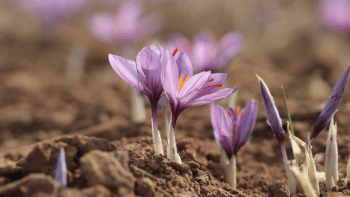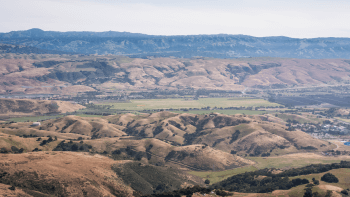Hives & Honey: A Story of Local Beekeeping
Steve, originally from Omaha, Nebraska, hasn’t always had a passion for bees or beekeeping. But two chance encounters with large swarms of bees stand out as the moments when bees piqued Steve’s interest. Steve encountered his first swarm when he was 18 years old and stationed in Hawaii while serving in the Coast Guard. One day, he ventured out to Waimea Falls on the island of Oahu where he climbed up a cliffside to jump into the ocean. While waiting to catapult off of the rocky cliff, Steve noticed that the whole side of the cliff was covered in bees; an 8-foot x 6-foot area that was within arms-length from where Steve stood. His next encounter happened many years later in the 90s.
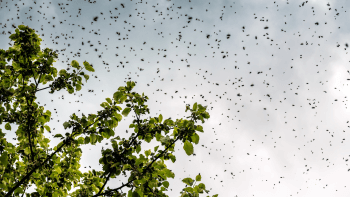
At the time, Steve worked as a general commercial contractor from his home office and was drafting up an estimate for a client. As Steve recalls, there was not a cloud in the sky, so he found it odd that it suddenly became extremely dark; almost as if someone turned off the sun. Curious about what was going on, Steve ran outside and witnessed a swarm of honeybees over 100 feet in height in front of his home. In awe, and also unsure of what to do next, Steve went back inside and reached out to the University of Nebraska’s agriculture department who was able to offer him some peace of mind: the safest time to be around bees is when they’re in a swarm.
With this new information, Steve went back outside and moved closer to the swarm. The honeybees began to descend from above and covered Steve without actually landing on him. He closed his eyes and took a few deep breaths. What started as a moment filled with nerves turned into an emotional and pivotal experience for Steve.
I could feel the air from their wings and hear their low hum. Their glands secrete a hormone and smell that is similar in scent to lemongrass that invites people in. The smell totally calmed me down.
And while beekeeping wasn’t initially top-of-mind for Steve, learning more about bees and nature became his new hobby. For such small creatures, Steve admires the intelligence of bees as well as how much they impact their surrounding environments. For example, Steve shared that a single Blue Orchard Bee, one of more than 20,000 bee species, is able to pollinate as much as 75 to 100 honeybees. In addition, bees are an important part of the dairy and milk production process as they’re responsible for pollinating alfalfa crops which feed cattle. And, one of the more impressive qualities of bees, is their ability to fly up to five miles away from their hive, find flowers, come back to their hive and do a dance that communicates to the other bees where the nectar and pollen source is located based on the wiggles and vibrations presented in their dance. Essentially, bees are accomplished in advanced math principles and can calculate the angle of the sun in relation to where a hive is located through a little dance. These facts, along with many others, inspired Steve to keep learning about bees. Eventually, he made the natural decision to start beekeeping and harvesting honey.
To start, Steve constructed two hives. Eventually, those two hives turned into four, which then turned into sixteen and, soon enough, Steve was managing 200 hives around San Jose. While Steve recognizes that this was too many hives, it was a good experience for him to better understand honeybees. In 1992, Steve connected with History Park, next to Happy Hollow Park & Zoo in San Jose, which was having issues with pollination in its vegetable garden. Ten years later, Steve was asked if he would be willing to provide a few hives for the Zoo, teach visitors how they work and demonstrate the importance of bees in our local ecosystem. Not only did Steve provide hives for the zoo, he also set up an observation-style hive which allows visitors to see directly into a beehive and watch the bees at work. Once his partnership with the zoo was in motion, Steve increased the number of hives on-site and started to sell his own honey under the name Willow Glen Honey Co.
We were getting a surplus of honey from the hives at the zoo. I wanted to sell it and donate the money back to Happy Hollow Foundation.
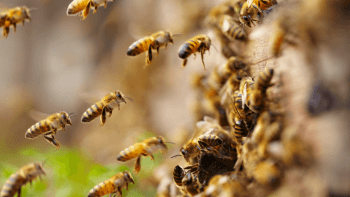
Shortly after Steve started to sell his honey, he learned about the financial burdens of widows living in the Democratic Republic of the Congo. Their husbands, who worked as rangers at Virunga National Park, were tragically killed while on-the-job while protecting the forests from individuals seeking to destroy nature to produce charcoal. After learning about this tragic situation, Steve knew there was an opportunity to improve the lives and wellbeing of these individuals and decided to donate proceeds from the sale of his honey to the widows. Over the years, Steve’s honey has raised $500,000 for the widows in the Congo. And, in 2016, he had the once-in-a-lifetime opportunity to visit Virunga National Park, teach the rangers how to keep bees in top bar hives and see the gorillas. Since Steve returned from his travels in the Congo, he’s continued to hone his craft and take care of local bees. Recently, Steve purchased 217 acres of land in Morgan Hill, which he calls Bucking Bee Ranch, where he keeps 30 hives which produce up to 1,000 pounds of honey.
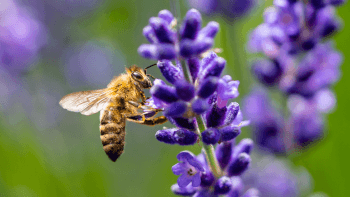
Steve’s honeybees, along with many other species of bees in Santa Clara Valley, are pollinators and play an important role in shaping the agricultural success of Santa Clara Valley. Humans rely on bees to visit flowers and crops, pick up pollen and spread it around to encourage reproduction. One out of every three bites of food a person consumes relies on the work of pollinators. Without bees and other pollinators, Santa Clara Valley would be significantly less rich in fresh fruits, vegetables and grains, among other crops that keep communities healthy and well.
The Santa Clara Valley region is lucky to have Steve as a leader in bee knowledge and care. Undoubtedly, Steve’s years of work with bees have made a positive impact on local agriculture, nature, the environment and beyond. To learn more about Steve’s work with bees, please visit the Willow Glen Honey Co. website here. Those interested in trying Steve’s honey can also visit Saguaro Home in Willow Glen and Montebello Road in Campbell where he continues to sell his honey.
Learn more about beekeeping!
For individuals interested in learning more about bees or starting their own beekeeping journeys, Steve suggests a handful of resources including:
- Honeybee Democracy
- Pollinator Conservation Handbook
- Our Native Bees
- Beekeeper’s Handbook
- And the Santa Clara Valley Beekeepers Guild which meets the first Monday of every month.
